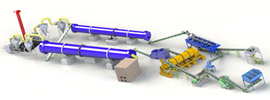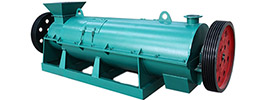In-Depth Analysis of the Future International Organic Fertilizer Market: Regional Opportunities and Technology-Driven Sustainable Development
I. Global Market Size and Growth Drivers
- European Market: Policy and Technological Innovation as Dual Engines
- Market Scale: Valued at USD 2.77 billion in 2024, projected to reach USD 3.12 billion by 2025 and exceed USD 8.27 billion by 2033, with a compound annual growth rate (CAGR) of 12.95%.
- Growth Drivers:
- Policy Compulsion: The EU's Nitrates Directive mandates a 30% reduction in nitrate pollution by 2025, accelerating the substitution of chemical fertilizers with biofertilizers. Germany and France are advancing market penetration through targeted subsidies (e.g., EUR 500 million annually in Germany).
- Cost Reduction via Technology: Large-scale production of microbial agents has reduced application costs by 15%, while bio-inorganic compound fertilizers (OMF) are growing at 12% annually.
- Consumer Upgrades: 70% of organic farms adopt biofertilizers, with Austria and Sweden exceeding 20% organic farmland coverage. Biofertilizers account for 30% of nutrient inputs in France.
- North American Market: Precision Agriculture Empowers Demand Upgrades
- Technological Leadership: North America Agricultural Group meets protected agriculture demands through smart controlled-release fertilizers (25% higher nitrogen absorption efficiency) and "fertilizer + micro-ecological agent" models.
- Market Structure: Premium products (e.g., water-soluble fertilizers, slow-release fertilizers) now represent 30% of the market, with fruit and vegetable sectors leading growth (e.g., 30% increased antioxidant content in tomatoes).
- Asian Market: Policy Dividends and Capacity Expansion
- Chinese Dominance: Capacity may exceed 200 million tons by 2025, though outdated technologies in small-medium manufacturers risk overcapacity. Policy targets 15% organic fertilizer substitution, with central fiscal subsidies (e.g., CNY 50-100 per mu) offsetting cost pressures.
- Southeast Asian Rise: New compound fertilizer plants in Vietnam and Indonesia are capturing ASEAN markets, driving regional capacity explosions.
- African Market: Potential Meets Challenges
- Demand Gap: 30 million tons needed by 2025, with only 40% self-sufficiency. Urea consumption in West Africa grows at 16.5% annually.
- Breakthrough Strategies: Modular small-scale organic fertilizer plants (10 tons/day livestock manure processing) are penetrating county-level markets, supported by African Development Bank investments in hybrid projects and raw material production.
II. Technological Innovation: From Strain Development to Digital Empowerment
- Biotechnology Breakthroughs
- Strain Optimization: AI-screened nitrogen-fixing bacteria GS-89 shorten R&D cycles, while IoT monitoring during fermentation enhances stability.
- Functional Products: Microbial inoculants boost grain yields by 15-20%, while bio-enzyme fertilizers improve stress resistance.
- Digitalization and Intelligence
- Precision Agriculture: Smart fertilization systems reduce fertilizer use by 40%, with adoption rates for biofertilizers rising 25% in Germany and the Netherlands.
- Supply Chain Optimization: Blockchain technology enables traceability of production and sales (e.g., Jiujiang Lilai project), cutting logistics costs by 40% (Agricycle case study).
- Circular Economy Models
- Waste Conversion: Municipal sludge-to-fertilizer and straw biochar technologies are commercialized, with EU landfill volumes reduced by 20%.
- Carbon Footprint Certification: EU carbon border taxes compel enterprises to disclose emissions, with biochar-based fertilizers eligible for 30% tax credits.
III. Policy Landscape and International Collaboration
- Global Policy Synergy
- Carbon Barriers: EU CBAM implementation in 2026 will require carbon cost accounting for Chinese nitrogen fertilizer exports.
- Trade Agreements: RCEP streamlines non-tariff barriers, with China exporting "fertilizer + machinery + finance" integrated solutions via the Belt and Road Initiative.
- Regional Collaboration Cases
- African Investments: The African Development Bank funds five fertilizer blending projects and three raw material production initiatives. Nigeria's "Presidential Fertilizer Initiative" drives localization.
- Technology Transfer: China exports livestock manure resource technologies to Southeast Asia, while Germany establishes precision fertilization R&D centers in the Netherlands.
IV. Consumer Trends and Market Demand
- Health and Environmental Awareness
- Organic Food Growth: The global market reached CNY 878.75 billion in 2023, projected to hit CNY 1.4 trillion by 2030 (CAGR 6.88%). North America holds 45.17%, with organic certification carrying premium value in categories like baby food.
- Crop-Specific Demand: Differentiated products like Ophiopogon japonicus fertilizer (Sichuan Huoshengyuan) and tea-specific fertilizer (Hunan Enzymatic Rice) command significant price premiums.
- Emerging Scenarios
- Urban Agriculture: European vertical farming projects grow 20% annually, with Spain and Italy contributing over 15% to local food production.
- Climate-Smart Agriculture: Biochar-based fertilizers receive subsidies under the U.S. Inflation Reduction Act, while India's NPK compound fertilizer localization compresses Chinese exports.
V. Challenges and Strategic Responses
- Cost and Market Acceptance
- Technological Cost Reduction: Microbial-nanomaterial composite fertilizers enhance utilization rates. Modular African plants reduce logistics costs.
- Policy Subsidies: EU carbon tax credits and China's VAT exemptions (up to CNY 1 million in annual taxable income) support adoption.
- Supply Chain and Infrastructure
- Localization: New capacities of 10 million tons in the Middle East (low-cost natural gas) and Africa (modular plants) reduce import reliance.
- Smart Logistics: 5G + blockchain optimizes distribution, cutting West African inland transport costs by 30%.
- Market Education and Standardization
- Farmer Training: 50% of Swedish smallholders lack nutrient management knowledge, necessitating targeted technical guidance.
- Certification Systems: ISO plans biofertilizer standards, with China leading Asian criteria for controlled-release fertilizers.
VI. Conclusion: The Golden Age of Global Organic Fertilizer Markets
Driven by policy constraints, technological innovation, and consumption upgrades, the international organic fertilizer market is undergoing structural transformation. Europe leads with policy and R&D advantages, North America deepens applications through precision agriculture, Asia expands via capacity and subsidies, and Africa resolves supply bottlenecks through international cooperation. In the next decade, functional products, digital services, and low-carbon certifications will become core competitive areas. Enterprises must focus on regional demand disparities and build three-dimensional capabilities in technology, policy, and markets to address climate change and food security challenges.
 Send us a Email
Send us a Email Wulong Industrial Cluster
Wulong Industrial Cluster Have any question?
Have any question?



















